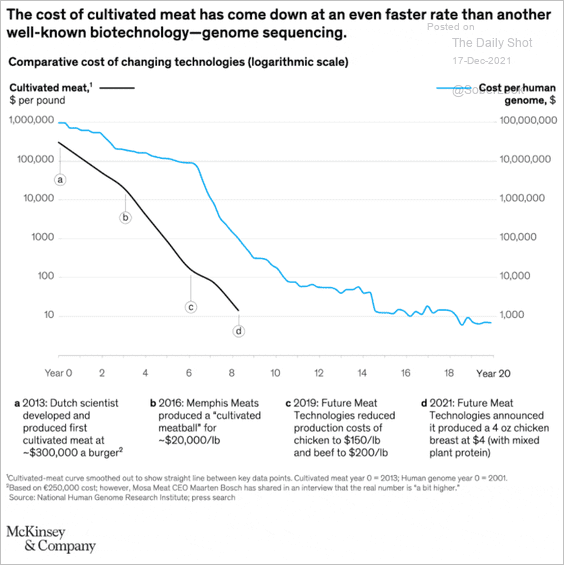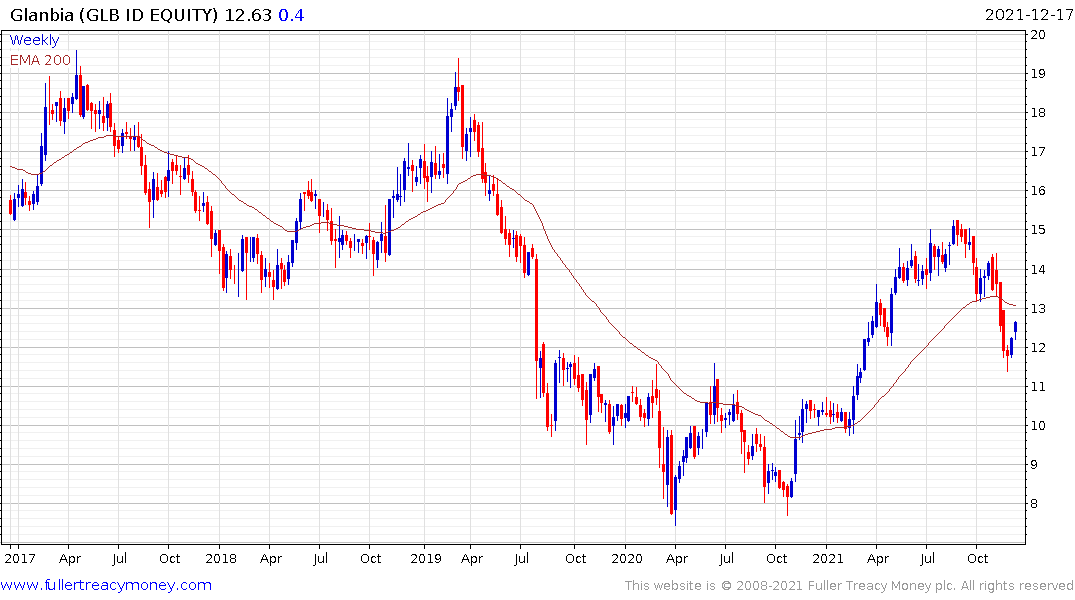Cultivated meat: Out of the lab, into the frying pan
This article from McKinsey may be of interest to subscribers. Here is a section:
Cultivated meat has the potential to not just match but surpass the taste and texture of conventional meat, as well as to introduce novel products. If consumers take to these products, the market for cultivated meat could reach $25 billion by 2030 (Exhibit 3). Currently, the world primarily eats the meat of animals that are the easiest to farm industrially, but cultivated meat won’t face those constraints. Instead, the industry could select cell lines from specific animals with the best traits, such as Wagyu beef or wild salmon, and replicate them at the same cost as, say, beef patties or tilapia.
Cultivated meat can also go one step further and select cell lines from animals that are not widely eaten because of their low meat content, long growing time, or lack of availability. For example, ostrich meat, a product that has challenged many ranchers, could be cultivated and become a trendy low-fat, red-meat alternative. There could even be room for highly creative product innovation: the industry’s imaginative take on dodo poultry could make a better nugget than chicken, or a burger made of what research chefs think mammoth might have tasted like could be a mouthwatering new concept.
While most start-ups are focusing first on more popular species and breeds, Eat Just’s GOOD Meat and the company Orbillion Bio are exploring Wagyu, and the company Vow is working to explore more exotic options, such as kangaroo and alpaca.
In the nearer term, companies may choose to focus on a single area and mix plant protein and other flavors into their products to achieve the desired taste and texture. Eat Just’s chicken product sold in Singapore, for example, is more than 70 percent cultivated cells, with a small amount of plant protein added in for structure, while Future Meat in Israel mixes cultivated fat with plant protein. It’s too early to tell if blended options are merely an interim fix or if they present a sufficiently compelling option for long-term adoption.
At a dinner party a few years ago a successful restauranteur held forth on what was required to be successful in the business. She said one had to realise there are only three products groups; Fat, sugar, and salt. You need the correct blend of each to ensure consumers keep coming back. At the same time, if you want to make money, the food had better be salty because then people drink more alcohol which is where margins are widest. That basic rationale is why fast-food outlets focus on all three groups. They keep people coming back for more.
Meat production is a global business with deep cultural overtones. It is going to be extremely difficult for labgrown meat to make an entry into it. That means costs above all other factors will need to be compelling. With greater focus on water usage, antibiotic resistant bacteria, microplastics, emissions, deforestation and pathogens and cost, the labgrown sector does have a fighting chance and economies of scale could revolutise the sector.

Ultimately, the potential for labgrown meat is about social change. The most basic global supply chain focuses on ensuring farm products end up on our tables with as little fuss as possible. Shortening those supply chains would represent one of the biggest social upheavals since the industrial revolution because it would force a fresh wave of people off the land. When twinned with vertical farm concepts there is significant scope to further urbanise populations.
This article from futurism focuses on the factors in California producing 50,000 pounds of labgrown meat a year. Thats’ part of the emerging trend of capital flowing into the sector. Medium-term there is a growing market for meal replacement solutions. UK-based Huel is reportedly getting ready to IPO. Most existing companies focus on supplements, dieting and pre-workout formulas.

Glanbia is currently firming from the upper side of its base formation.


